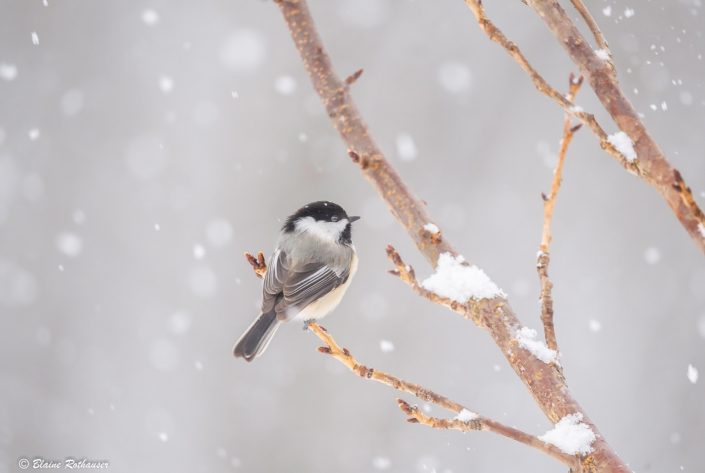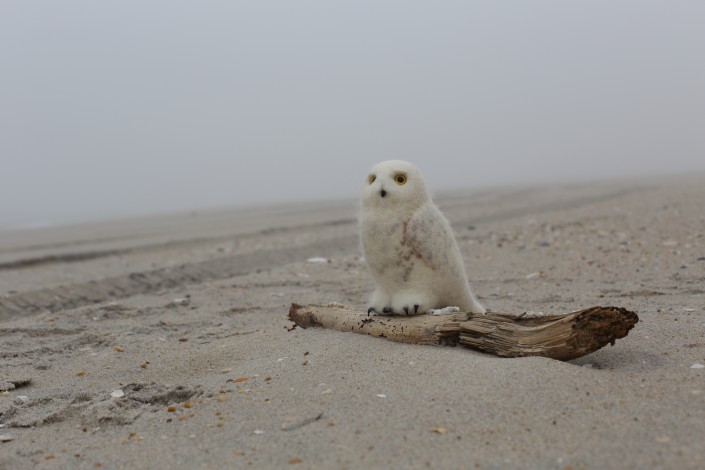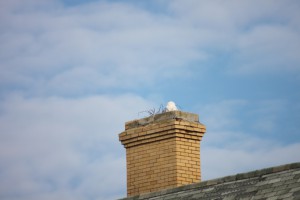Snowy Owls in Seaside Park, New Jersey
By: Guest Blogger Eric Chandler, Wildlife & Nature Photographer
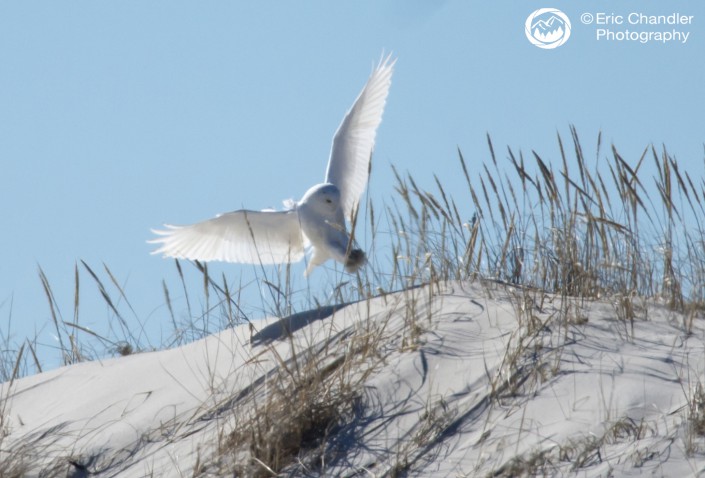
Why do snowy owls from the Arctic migrate to New Jersey? I was determined to photograph these beautiful creatures, as well as research why snowy owls return to Island Beach State Park (IBSP) every year.
The migratory snowy owl population has been spotted all along the coast of New Jersey. Popular hangouts include Sandy Hook, Island Beach State Park, Long Beach Island and even further south as all the Atlantic City. Snowy owls have also been spotted as south as North Carolina.
Unlike other raptors, snowy owls spend the majority of their time sitting, as they hunt for prey from the ground. Their unique ability to rotate their head up to 270 degrees allows them to sit in one spot and scan large land areas for prey. The sand dunes at Island Beach State Park provide owls with an opportunity to scan for prey from a seated position, while elevated. Extreme winds are also present on ISBP; the offshore and onshore winds produce some pretty wicked combinations, which give snowy owls that at home feel.
The only real threat to snowy owls at IBSP is human disturbance. Like all raptors, it is illegal to hunt or trap snowy owls. Even though they aren’t hunted with rifles, they are hunted by photographers, who may step on dunes. I can’t express how many times I’ve watched snowy owls take off due to people getting too close. I’m thankful that they still return instead of finding a new migration home. Occasionally, helicopters fly overhead and the owls just watch them in confusion.
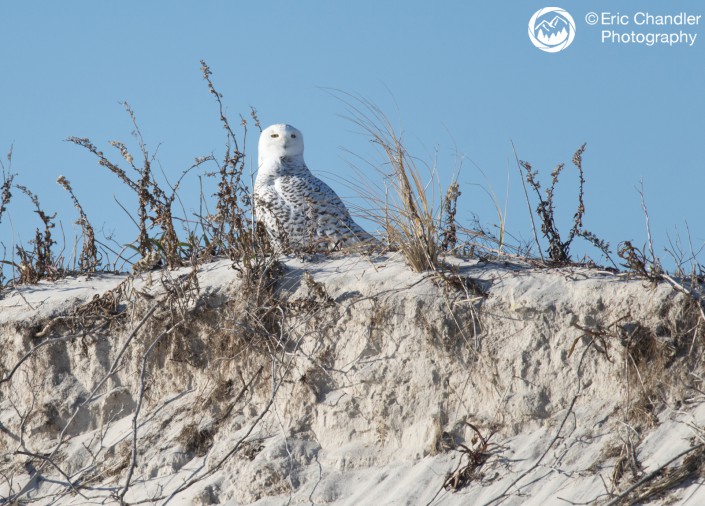
Don’t be fooled by the size of snowy owls; these birds have wingspans up to five feet and reach up to two feet tall. With such great size, snowy owls are able to hunt ducks, geese, and even large waterfowl if need be. Small rodents such as lemmings and hares are their favorite, they consume over 1,600 lemmings a year! IBSP features a wide variety of prey on their local menu such as squirrels, mice and small birds. Unfortunately, in the three seasons I’ve spent studying and photographing snowy owls, I have yet to witness a snowy owl eat. Snowy owls are diurnal, which means they are active during both the day and night. It never clicked in my head, but if you think about it, during many months in the arctic there are 24 hours of sunlight, which explains why they are diurnal. During migrations, they mostly hunt late in the day.
Over the past three seasons of photographing the female snowy owl, I never spotted a male, until this year! To my knowledge, this is the first year the male has been spotted at IBSP. The female is very beautiful, with dark markings throughout her pure white feathers, and bright, cat-like yellow eyes. I could photograph her for days. As I was packing up after photographing the female one afternoon, I saw a massive heard of photographers with their bazooka lenses. They must have spotted something pretty important, so I had to see. Could there be two female snowy owls? Once I arrived, I could not believe my eyes, a pure white snowy owl. Now, I love using the term majestic when it comes to wildlife, it’s a very powerful adjective. This male snowy owl surpasses that adjective for sure. It’s so hard to put into words how beautiful this creature is when seeing it right before your eyes, in order to appreciate its beauty. From his ability to spin his head up to 270 degrees, to seeing him squint his yellow eyes at you. His beauty almost demands to have his photograph taken. The stunning glow of the solid white plumage reflecting off the sunlight was a sight to see. I believe he enjoyed the paparazzi coverage; he wasn’t disturbed at all and sat with us for hours. For weeks after that day, every photographer that I bumped into and had not seen him since.
On an early Sunday morning, after shooting the female owl for three-four hours with about twenty photographers, I decided to venture a little bit and search for the male. If you’re not familiar with Island Beach State Park, it is a narrow, 10-mile barrier island with only one road. It’s very easy to get in the car and drive from parking lot to parking lot, but your chances of missing the wildlife are extremely high (many people also acquire a driving on the beach permit.) For me, I love being out in sub 20 degree temperatures, admiring the peaceful empty beach and watching groups of ocean birds play tag with each other. After four miles of walking, hoping to spot the male owl, all of a sudden this huge white bird starts flying towards me. He literally landed on top of a dune right in front of me! I spent the remainder of my day with him and captured some the best photographs of my career.
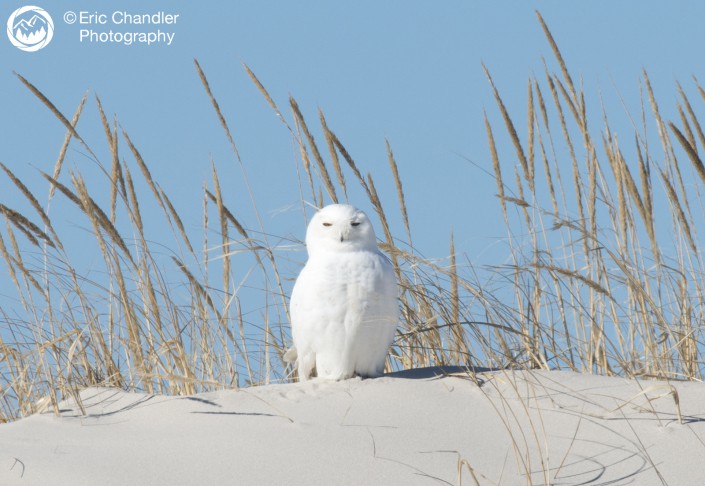
Underneath multiple layers with the cold wind blowing in my face on a gorgeous beach without a cloud in the sky, the sun to my back, a prime photography setting, and not a person within miles of my view, this was my sanctuary. If you want to capture the award winning photograph, you must learn patience and be respectful of the wildlife. Don’t chase after wildlife, they will come to you when the time is right. If you didn’t get your opportunity today, you will in the future.
So, now we know why this pair of snowy owls enjoys migrating to Island Beach State Park each year. They have plenty of mammals and birds to prey upon, elevated sand dunes to hunt from with almost no threat from larger predators. A few years ago, there was a eruption of snowy owls that traveled the coastline. Researches said this rare abundance of snowy owls usually occurs every 30-40 years! This was due to a large population of lemmings in the Arctic, prior to migration seasons. I find it very interesting that in Paleolithic caves in France, drawings of snowy owls were created over 40,000 years ago. That makes them the one of the oldest recognizable bird species show in in pre-historical art in the world.
From drawings in a cave, to photographs that I capture, it’s pretty awesome to share the appreciation of snowy owls from thousands of years ago. They are beautiful creatures and I look forward to their return each winter. Snowy owls migrate back to their homes in the tundra in late March, early April. With only a few months left, get out there and search for snowy owls at your local beach, but please be sure to respect the wildlife, and stay off the dunes!
Eric Chandler is a Wildlife & Nature Photographer based in New Jersey.
Eric reports that roughly three-four weeks ago the pair of Snowy Owls mentioned in this post left Island Beach State Park. Recent reports of large amounts of snowy owls in Northern New York have led Eric to believe that the owls are heading back home!
